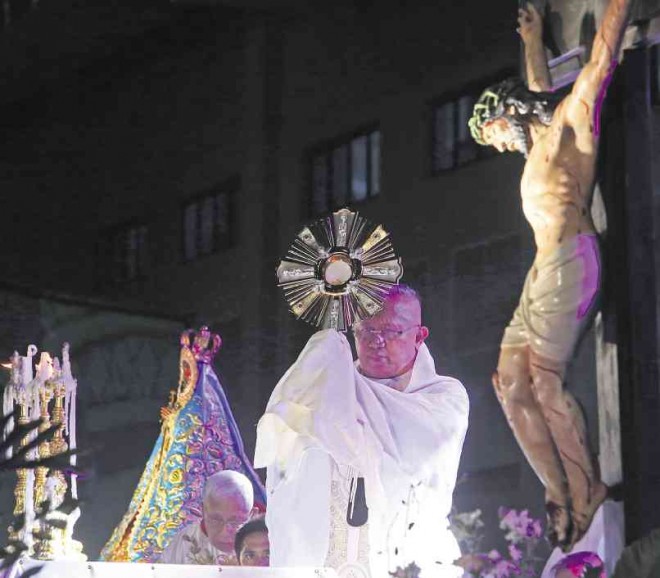
CEBU ARCHBISHOP Jose Palma celebrates Mass at the newly-built Cebu Pavilion which would serve as a venue of the International Eucharistic Congress. LITO TECSON / CEBU DAILY NEWS
CEBU CITY—After just 15 months of construction work, Cebu’s Pavilion is ready for the 51st International Eucharistic Congress (IEC), which is expected to draw 15,000 delegates from different parts of the world from Jan. 24 to 31, 2016.
Owners of Duros Development Corp. (DDC), the company that rose to the challenge of providing a venue for the international event, turned over the three-story structure to the Archdiocese of Cebu on Saturday.
It was an emotional moment for DDC and the local church.
“At certain points, some began to doubt,” said Cebu Archbishop Jose Palma during homily prior to the turnover ceremony. “But all along we knew that the Lord journeyed with us. Our God is a God of surprise,” he said.
Cebu’s newest landmark stands on a 25,754-square meter lot behind the archdiocesan seminary in Mabolo, Cebu City.
The cost of the Pavilion, P550 million, was shouldered by DDC.
In exchange, the Archdiocese of Cebu would give the construction company usufruct rights over part of the seminary property.
The Eucharistic Pavilion features a plenary hall, a theater and six function rooms.
Unlike other convention centers, the Pavilion is left with bare cement as its walls and floors.
Architect Carlos Pio Zafra said he was instructed by Cebu Auxiliary Bishop Dennis Villarojo, the IEC secretary general, to do away with flamboyant design to reflect the Church’s desire to be an institution for the poor.
“When we host an international gathering, we’re always tempted to use flamboyant designs. But Bishop Dennis wants a spiritual structure that is simple and humble. He doesn’t want a capricious building,” Zafra said in an interview.
After the IEC, the building would be used as a pastoral center, a venue for religious gatherings and an evacuation center in times of emergencies.
Part of the Pavilion would be converted into a new minor seminary after the religious gathering.